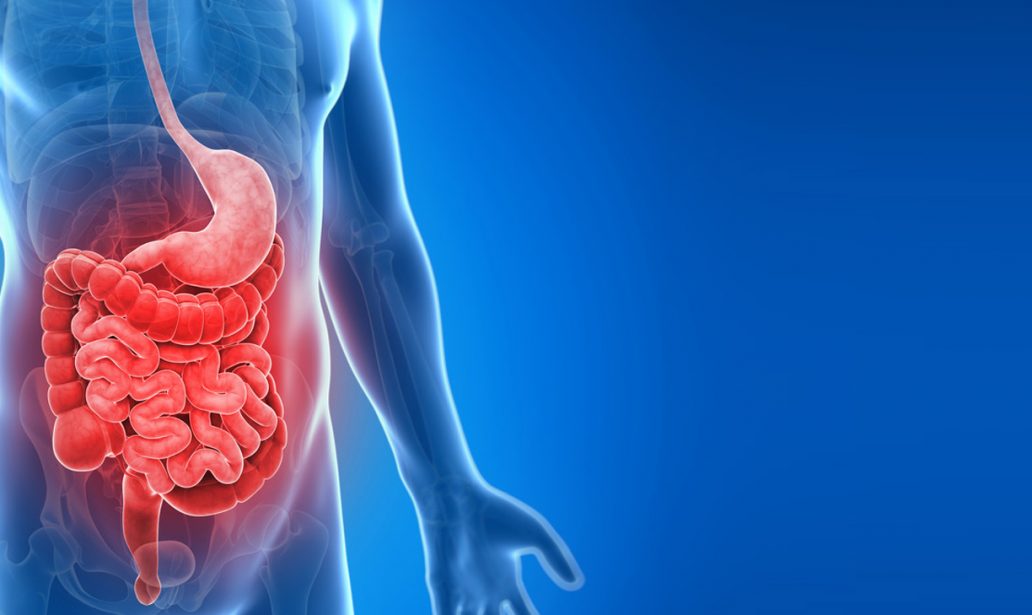Inflammatory Bowel Disease (IBD) is an autoimmune disease in which the body’s own immune system attacks elements of the digestive system.
What is IBD?
IBD is often confused with Irritable Bowel Syndrome (IBS), a troublesome but much less serious condition. IBD occurs when the lining of the GI (gastrointestinal) or digestive tract becomes inflamed. This disrupts the body’s ability to digest food, absorb nutrition and eliminate waste in an effective manner.
The (2) two most common forms of IBD are Ulcerative Colitis (UC) and Crohn’s Disease (CD).
Crohn’s Disease vs. Colitis
The main difference between Crohn’s Disease and Ulcerative Colitis is the location and nature of the inflammatory changes.
The inflammation from CD can strike anywhere in the gastrointestinal (GI) tract, from mouth to anus, although a majority of the cases start in the terminal ileum.
Ulcerative Colitis, in contrast, is restricted to the colon and the rectum. The inflammation in Crohn’s Disease can extend into the muscle wall, whereas Ulcerative Colitis inflammation occurs only in the surface of the colonic lining.
Symptoms of IBD
- Abdominal cramps and pain
- Bloody diarrhoea
- Severe urgency to have a bowel movement
- Fever
- Loss of appetite
- Weight loss
- Anaemia or low blood count
Risk factors
- Smoking: this is one of the main risk factors for developing Crohn’s disease. It aggravates the pain and other symptoms of Crohn’s disease and increases the risk of complications. However, ulcerative colitis primarily affects nonsmokers and ex-smokers.
- Ethnicity: While IBD is present in all populations, certain ethnic groups such as Caucasians and Ashkenazi Jews have a higher risk.
- Age: IBD can happen at any age, but it usually starts before the age of 35.
- Family history: having a parent, sibling or child with IBD is common for persons with the disease.
- Geographical region: People who live in urban areas and industrialized countries have a higher risk of getting IBD, as they tend to eat more fat and processed food.
- Gender: IBD affects both genders equally. Ulcerative colitis is more common among men, while Crohn’s disease is more common among women.
How is IBD diagnosed?
IBD is diagnosed using a combination of endoscopy (for Crohn’s disease) or colonoscopy (for ulcerative colitis) and imaging studies, such as contrast radiography, magnetic resonance imaging (MRI), or computed tomography (CT). Both MRIs and CT scans can be used to determine how much of the intestine is affected by IBD.
Flexible sigmoidoscopy and colonoscopy use a camera on the end of a thin, flexible probe to look at the colon. The camera is inserted through the anus. It allows your doctor to look for ulcers, fistulas, and other damage in the rectum and colon. A colonoscopy can examine the entire length of the large intestine. A sigmoidoscopy examines only the last 20 inches of the large intestine — the sigmoid colon.
Physicians may also check stool samples or do blood tests.
How is IBD treated?
Several types of medications may be used to treat IBD: aminosalicylates, corticosteroids (such as prednisone), immunomodulators, and the newest class approved for IBD—the “biologics”. Several vaccinations for patients with IBD are recommended to prevent infections.
Severe IBD may require surgery to remove damaged portions of the gastrointestinal tract, but advances in treatment with medications mean that surgery is less common than it was a few decades ago. Since Crohn’s disease and ulcerative colitis affect different parts of the GI tract, the surgical procedures are different for the two conditions.
Adapted for WellnessConnect from Sources:
CDC
Healthline

